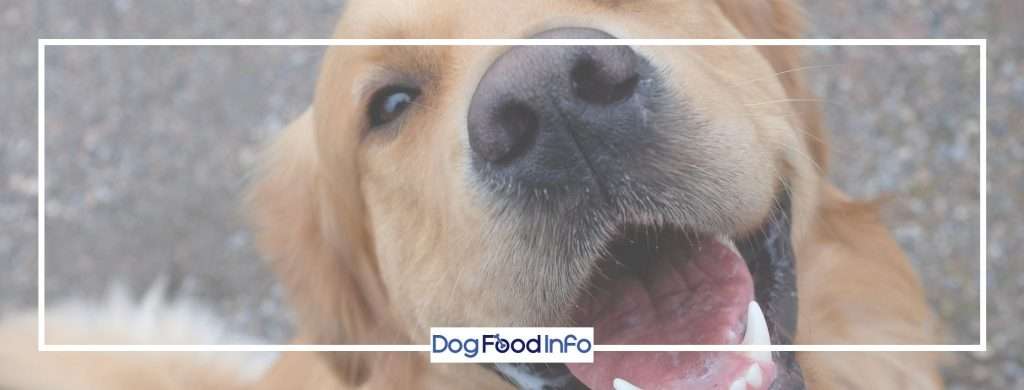After breast milk, puppies need a good healthy diet to aid in their development.
For this, the energy and nutrient supply must be adjusted. Small dog breeds, with a maximum height of around 30cm, reach their full growth size within one year and have a much faster metabolism than comparable large breeds.
For example, German Spitz Klein puppies or a Jack Russell Terrier require an increased intake of proteins, calcium, fats and phosphorus for a well-developed bone growth. In turn, medium-sized dog breeds, which have a height of no more than 50cm, require different nutrients for growth.
Larger dog breeds, with a height of over 50cm, need a food which is geared to a rapid growth. Basic components of puppy food should therefore be calcium, phosphorus and a balanced energy content.
However, from dogs origins in the wild, there is no different sized prey for extra small or large dogs!
This is why high quality dog food is equally suitable for all dogs. For us, the dog foods at the breed and size level are typically just marketing campaigns. Puppy food does make sense due to a higher protein content for the growth of the puppy, however the others are questionable.
Top Tip: Attention must be paid to beta-carotene, antioxidants and vitamin E to promote better bone and muscle development. Additional omega-6 or omega-3 fatty acids make for a shiny coat, and should be included in the puppy food if possible.
First Food during the Acclimatization Phase
Directly after the mother’s milk, begins the so-called acclimation phase. This process should not be abrupt but rather be done within a timeframe of around 2 weeks / 14 days. To make the conversion is not too difficult and you can still mix the puppy dry food with some breastmilk substitute at the beginning.
During this time, there may be 3-4 meals per day for the puppy, with the milk substitute being reduced from time to time.
Once the puppy has become accustomed to the dry food, it is necessary to make sure that the dry food is of high quality and that it is precisely tailored to the small or large breeds of dogs. However, it is always important to understand that wet food is more appropriate and beneficial than dry food.
Developing Fixed Eating Habits
Small or large dog breeds tend to have completely different eating habits. These need to be considered when feeding. Small breeds tend to develop good eating habits much faster compared to larger breeds. Fixed eating times are important for the routine of our four-legged friends. With medium-sized and large dog breeds, fixed feeding times and portion sizes are indispensable, as large breeds like to eat more than they would actually need. Here you have to remain persistent and must not be influenced by the dogs moaning. Instead, it is best to understand your puppy and have confidence that the portion sizes you are providing are sufficient and that no overfeeding is necessary.
Small Dog Breeds: Too Much Food Is Harmful
The growth phase of a small dog breed is already completed in a time frame of around 9-12 months. Due to the small amount of time, it is important to provide the puppy with the right food, so that the bone structure and the muscles can develop properly. Therefore, as a main ingredient in a food, you should choose protein, minerals and energy. Although strict attention must be paid to regular feeding times, as an overdose of puppy food can have huge consequences. For example, if you give too much protein, it can promote obesity. Also, an overfeed of calcium contributes to bone malformation and can make them porous in the long term. In order to completely avoid such mistakes, you should resort to high-quality products from the start. Puppy food is closely matched to the growth process of the dog and contains all the nutrients your dog needs. You may also occasionally give small treats, however these rations should be deducted from the meal value.
Suitable Food for Small Dog Breeds
With a puppy food purchase for small dog breeds, it depends mainly on the quality of ingredients. A sufficient supply of protein and calcium must be guaranteed, as well as the simple digestion quality of the feed. For example, digestible crude protein is only digested to a percentage of up to 70%. Chemical additives, sugar or even artificial flavours, do not belong in a high-quality puppy food and should be avoided.
Puppy Food for Larger Dog Breeds
Large dog breeds require different diets compared to smaller dogs due to their growth rate. With this growth rate, a dog can hold up to 18 months constant and therefore requires a well thought-out puppy food. For example, in a Great Dane, they have around a 24-month growth phase. An over intake of energy sources would therefore be completely wrong and can only lead to bone malformation.
High quality puppy food for large dog breeds is packed with all the essential nutrients your dog needs for perfect growth. Calcium supplements are not recommended, as it can inhibit the absorption of zinc, phosphorus, iron and copper. This in turn leads to a lack of minerals and can cause a discomfort for your dog.
If you choose a cheap food for financial reasons, you should definitely resort to a specialist puppy food. Otherwise, the risk of nutritional shortages, can’t be excluded. For high-quality dog food (and we do not mean the brands you see on TV!) you can provide adult food to your puppy. Often, these manufacturers have no special puppy food, as it is simply not necessary. As already stated, there is no rabbit in the wild which has written on it “only suitable for puppies”!
A cheap and inferior adult dog food contains the vital nutrients and energy supply only in an attenuated form, which can be rather detrimental to a puppies development.
To conclude, a high level of energy can only be maintained with a special puppy food or high-quality dog food.














